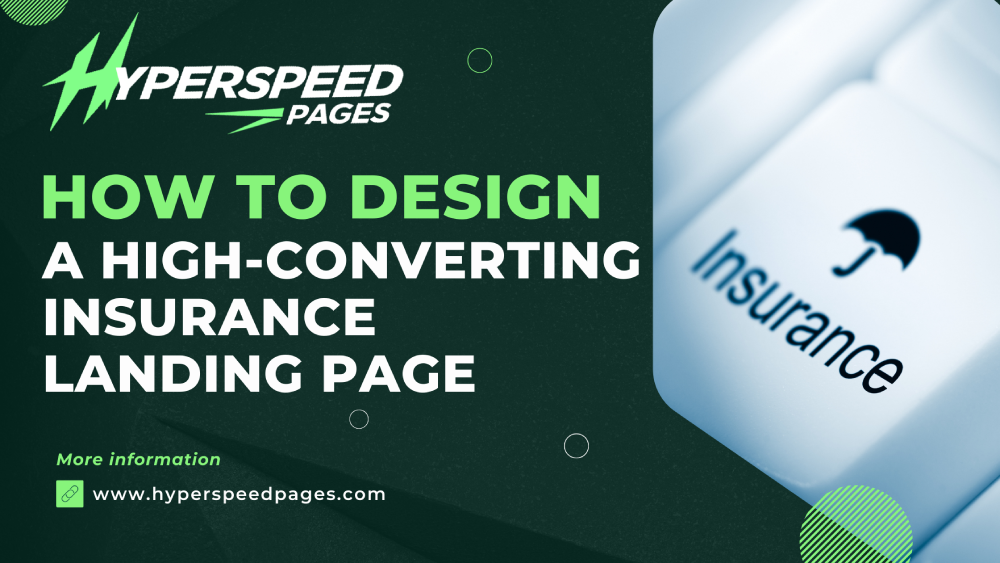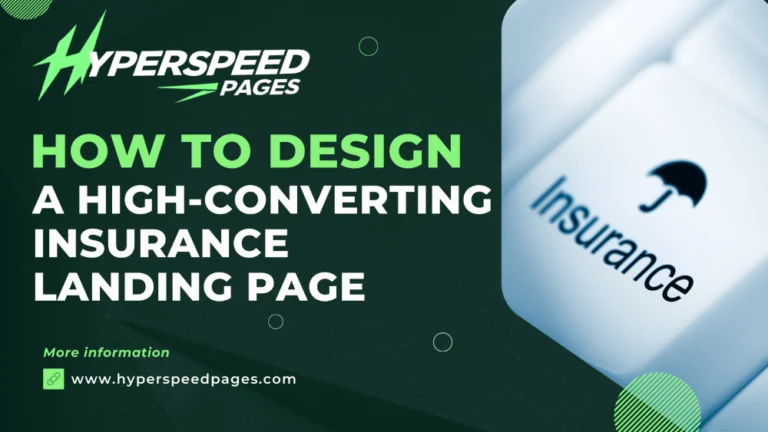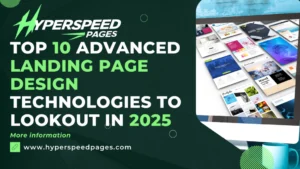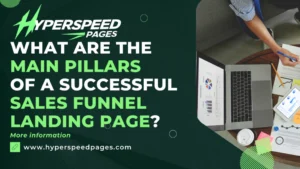
Unlike a homepage, which serves multiple purposes, a landing page has a single focus: to convert visitors into leads or customers. For insurance companies, this often means encouraging visitors to request a quote, sign up for a consultation, or download a guide.
A well-designed insurance landing page doesn’t just attract visitors; it turns them into customers by addressing their pain points, offering solutions, and guiding them through the decision-making process.
Your Target Audience for Insurance Landing Page
Before designing a landing page, it’s imperative to have a deep understanding of your target audience. This involves:
- Demographics: Age, gender, income level, location, and education.
- Psychographics: Lifestyle, values, interests, and beliefs.
- Pain Points: The specific problems or concerns your insurance product addresses.
- Buying Behavior: How your target audience typically makes purchasing decisions.
User Experience (UX) for Conversion
A high-converting landing page is rooted in exceptional user experience (UX). UX encompasses everything from page load speed to navigation ease, impacting how users interact with your page and, ultimately, whether they convert. Key UX considerations include:
A. Page Load Speed
According to Google, 53% of mobile users abandon a site if it takes longer than 3 seconds to load. For insurance landing pages, where trust is paramount, a slow-loading page can significantly impact conversion rates. Use tools like Google PageSpeed Insights to optimize your page speed by:
- Compressing images and multimedia: Ensure all images are compressed without losing quality.
- Minimizing HTTP requests: Reduce the number of elements on your page.
- Leveraging browser caching: Store parts of your page in the user’s browser to reduce load times on subsequent visits.
B. Mobile Optimization
With over 50% of web traffic coming from mobile devices, mobile optimization is non-negotiable. A responsive design ensures your amazon landing page looks and functions perfectly on all screen sizes. This includes:
- Responsive design: Ensure your layout adjusts seamlessly to different screen sizes.
- Touch-friendly design: Buttons and links should be easy to tap, with adequate spacing to avoid accidental clicks.
- Mobile-optimized forms: Forms should be easy to fill out on mobile devices, with large input fields and autofill options.
C. Intuitive Navigation
The navigation on your landing page should be straightforward, guiding users towards conversion without distractions. This can be achieved by:
- Single-page navigation: Avoid multiple links that lead away from the landing page. Keep users focused on the conversion goal.
- Clear call-to-action (CTA) placement: Position CTAs prominently, ensuring they stand out visually and are easy to find.
Crafting Compelling Content
Content is king when it comes to landing pages, especially in the insurance industry, where trust and clarity are crucial. Your content should be informative, engaging, and persuasive, addressing the concerns of potential customers and guiding them towards conversion.
A. Headline and Subheadline
Your headline is the first thing visitors see, so it needs to grab their attention and communicate the core value proposition immediately. A strong headline:
- Addresses a pain point: Speak directly to the problem your target audience is facing.
- Offers a solution: Clearly state how your insurance product solves that problem.
- Is concise and impactful: Avoid jargon and keep it simple. For example: “Protect Your Family’s Future with Affordable Life Insurance”.
The subheadline should complement the headline, providing additional context or details. For example: “Get comprehensive coverage at competitive rates in just minutes”.
B. Value Proposition
Your value proposition is what sets you apart from competitors. It should be prominently displayed and clearly communicated, answering the question: “Why should I choose your insurance product?” Elements to include:
- Unique Selling Points (USPs): Highlight features that make your insurance product stand out, such as low premiums, extensive coverage, or easy claims processing.
- Social Proof: Include testimonials, ratings, and reviews from satisfied customers to build trust and credibility.
C. Persuasive Copy
The body copy of your Sass landing page should be clear, concise, and persuasive. Focus on the benefits of your insurance product rather than just the features. Use bullet points, subheadings, and short paragraphs to make the content scannable.
- Use emotional appeal: Insurance is often an emotional purchase. Tap into emotions like security, peace of mind, and protection.
- Incorporate statistics and facts: Back up your claims with data. For example, “90% of our customers save an average of $200 annually on premiums.”
- Address objections: Anticipate common objections or concerns and address them proactively in the copy.
Visual Elements and Trust Signals
Visuals play a crucial role in engaging visitors and building trust. The design should be clean and professional, with a focus on enhancing the user’s understanding and trust in your offering.
A. Hero Image or Video
The hero section is the first thing users see and sets the tone for the entire digital marketing landing page. A well-chosen hero image or video can convey emotions, illustrate the benefits of your product, and draw users in. For an insurance landing page, consider:
- Relatable imagery: Use images of happy, diverse families, individuals, or businesses that reflect your target audience.
- Product demonstration videos: A short video explaining the insurance product and its benefits can be more engaging than text alone.
B. Trust Badges and Certifications
Trust badges and certifications add credibility to your landing page. These could include:
- Security badges: Show that your site is secure with SSL certificates.
- Industry certifications: Display certifications from recognized insurance authorities.
- Client logos: If you serve well-known clients, displaying their logos can build trust.
C. Testimonials and Reviews
Customer testimonials and reviews provide social proof, showing potential customers that others have had positive experiences with your product. Include:
- Diverse testimonials: Feature testimonials from different types of customers, such as individuals, families, and businesses.
- Star ratings: If you have high ratings on platforms like Trustpilot or Google, display them prominently.
Optimizing the Call to Action (CTA)
The CTA is arguably the most important element on your landing page. It’s what turns a visitor into a lead or customer. The design and placement of your CTA can significantly impact conversion rates.
A. CTA Button Design
Your CTA button should stand out from the rest of the page, drawing the user’s eye and encouraging them to click. Best practices include:
- Contrasting colors: Choose a color that contrasts with the rest of the page to make the CTA button pop.
- Size and placement: The button should be large enough to be easily clickable but not overwhelming. Place it above the fold and repeat it throughout the page, especially after key sections of content.
B. CTA Copy
The copy on your CTA button should be action-oriented, clearly stating what the user will get by clicking. Avoid generic phrases like “Submit” or “Click Here.” Instead, use specific, benefit-driven language:
Examples: “Get My Free Quote”, “Start Saving Now” or “Protect My Business”.
A/B Testing and Continuous Optimization
No landing page is perfect from the start. To maximize conversions, it’s essential to continuously test and optimize your landing page elements. A/B testing allows you to compare two versions of a page to see which performs better.
A. Elements to Test
Common elements to test include:
- Headlines: Test different headlines to see which resonates most with your audience.
- CTA buttons: Experiment with different colors, sizes, placements, and copy.
- Images and videos: Test different hero images or videos to see which has a greater impact on engagement.
B. Data Analysis
Use analytics tools like Google Analytics, Hotjar, or Crazy Egg to track user behavior on your web landing page. Look for patterns that indicate where users are dropping off or getting stuck, and use this data to inform your optimizations.
Ensuring Compliance and Security
Insurance is a heavily regulated industry, and compliance is crucial to avoid legal issues and build trust with customers. Additionally, ensuring the security of your landing page is vital for protecting user data.
A. Compliance with Industry Regulations
Make sure your landing page complies with all relevant insurance regulations, including:
- Disclosures and disclaimers: Clearly display any required legal disclaimers, terms and conditions, and privacy policies.
- Licensing information: Include your insurance license number and any relevant state or federal certifications.
- Accessibility: Ensure your page is accessible to users with disabilities, following the Web Content Accessibility Guidelines (WCAG).
B. Security Best Practices
Protecting user data is critical for maintaining trust and complying with regulations like GDPR. Security measures include:
- SSL certificates: Ensure your landing page is served over HTTPS, encrypting user data in transit.
- Secure forms: Use secure form submissions, protecting sensitive information like Social Security numbers or credit card details.
- Data privacy policies: Clearly explain how user data will be collected, stored, and used, and offer users the option to opt-out of data collection.
Leveraging SEO and SEM for Traffic
To drive traffic to your insurance landing page, it’s essential to implement both SEO (Search Engine Optimization) and SEM (Search Engine Marketing) strategies. These approaches will help your page rank higher in search results and attract qualified leads.
A. SEO Best Practices
Optimize your landing page for relevant insurance-related keywords to improve organic search rankings. Key areas to focus on include:
- Keyword research: Use tools like Google Keyword Planner, Ahrefs, or SEMrush to identify high-value, low-competition keywords related to your insurance offerings. Focus on both short-tail and long-tail keywords, such as “life insurance quotes” or “affordable business insurance for startups”.
- On-page optimization: Incorporate your primary and secondary keywords naturally into key areas of your landing page, including the title tag, meta description, headers (H1, H2, H3), and body copy. However, avoid keyword stuffing, which can negatively impact user experience and search rankings.
- Content quality: Ensure your landing page content is high-quality, informative, and provides value to the user. Google’s algorithms favor content that demonstrates E-E-A-T, so emphasize expertise, authoritativeness, and trustworthiness throughout your page.
- Internal linking: Link to other relevant pages on your website to provide additional context and help search engines understand the structure of your site. This can also keep visitors on your site longer, increasing the likelihood of conversion.
- Image optimization: Optimize images by using descriptive, keyword-rich file names and alt text. This not only improves accessibility but also helps search engines understand the content of your images.
- Page speed optimization: As previously mentioned, ensure your landing page loads quickly, as page speed is a significant ranking factor for Google. Compress images, minify CSS and JavaScript files, and leverage browser caching to improve load times.
B. SEM Strategies
While SEO focuses on organic traffic, SEM involves paid strategies to drive targeted traffic to your landing page. Google Ads is a powerful tool for running SEM campaigns, and when combined with a well-optimized landing page, it can significantly boost conversions. Key SEM strategies include:
- PPC (Pay-Per-Click) campaigns: Create targeted PPC campaigns on Google Ads, bidding on high-intent keywords related to your insurance products. Use ad extensions like sitelinks, callouts, and structured snippets to provide additional information and encourage clicks.
- Ad copy optimization: Craft compelling ad copy that highlights your unique value proposition and includes a strong call to action. Use ad variations to A/B test different messages and identify the most effective copy.
- Landing page relevance: Ensure that the content of your landing page closely aligns with the ad copy and keywords. Google rewards relevance with higher Quality Scores, leading to better ad placements and lower cost-per-click (CPC).
- Remarketing campaigns: Use remarketing to target users who have previously visited your landing page but did not convert. Tailor your ads to remind them of the benefits of your insurance products and encourage them to return and complete the conversion.
Incorporating Analytics and Tracking
To measure the effectiveness of your insurance landing page and identify areas for improvement, it’s essential to implement robust analytics and tracking mechanisms. These tools provide insights into user behavior, conversion rates, and the overall performance of your landing page.
A. Google Analytics
Google Analytics is a powerful tool for tracking and analyzing user interactions on your landing page. Key metrics to monitor include:
- Bounce rate: The percentage of visitors who leave your landing page without interacting further. A high bounce rate may indicate that your page isn’t meeting user expectations or that the user experience needs improvement.
- Average session duration: This measures the average amount of time users spend on your landing page. A longer session duration typically indicates higher engagement with your content.
- Conversion rate: The percentage of visitors who complete the desired action on your landing page, such as filling out a form or requesting a quote. This is the most critical metric for assessing the success of your landing page.
- Traffic sources: Analyze where your visitors are coming from, whether it’s organic search, paid ads, social media, or referral sites. This helps you identify which channels are driving the most valuable traffic.
- User flow: Track the path users take on your landing page, from entry to exit. Understanding the typical user journey can highlight areas where users may be dropping off or where you can improve navigation to boost conversions.
B. Heatmaps and Session Recordings
Heatmaps and session recordings provide a visual representation of user behavior on your landing page. Tools like Hotjar or Crazy Egg can help you understand how users interact with your page:
- Heatmaps: Show where users click, scroll, and spend the most time on your landing page. This can reveal which elements are attracting attention and which are being ignored.
- Session recordings: Watch real-time recordings of user sessions to see exactly how they navigate your landing page. This can help you identify friction points or usability issues that may be hindering conversions.
- Scroll maps: These show how far down the page users typically scroll. If key content or CTAs are placed too far down, and users aren’t reaching them, you may need to adjust the layout.
C. Conversion Tracking
Implement conversion tracking to measure the effectiveness of your CTAs and overall landing page performance. Google Tag Manager (GTM) can be used to set up and manage tags without modifying your website’s code, allowing you to track:
- Form submissions: Track when users submit a form, such as a quote request or sign-up form. This is a direct measure of conversions.
- Button clicks: Measure how often users click on key buttons, such as “Get a Quote” or “Contact Us”. This can provide insight into user intent and the effectiveness of your CTAs.
- Call tracking: If your landing page includes a phone number, use call tracking to monitor how many users call directly from the page. This can be a valuable metric, especially for insurance products that require more personal consultation.
Legal Compliance and Privacy Considerations
Given the sensitive nature of personal information handled by insurance companies, it’s crucial to ensure that your landing page complies with all relevant legal regulations and privacy standards. This not only protects your business from legal risks but also builds trust with your customers.
A. Data Privacy Regulations
Compliance with data privacy regulations like the General Data Protection Regulation (GDPR) in Europe, the California Consumer Privacy Act (CCPA), and other relevant laws is essential. Key practices include:
- Transparent data collection: Clearly inform users about what data is being collected, how it will be used, and who it will be shared with. This should be outlined in a comprehensive privacy policy.
- Consent management: Implement mechanisms to obtain explicit consent from users before collecting or processing their personal data. This can include consent checkboxes for forms and cookie consent banners.
- Right to access and delete: Ensure that users can easily request access to their data or have it deleted. Provide clear instructions on how they can exercise these rights.
B. Security Measures
To protect sensitive user information, especially when handling data like Social Security numbers or financial details, robust security measures must be in place:
- SSL/TLS encryption: Secure your landing page with SSL/TLS encryption (HTTPS) to protect data in transit. This is critical for safeguarding any information users submit through your forms.
- Data storage and encryption: Ensure that any personal data collected is securely stored and encrypted. Use industry-standard encryption protocols to protect against data breaches.
- Regular security audits: Conduct regular security audits to identify and address potential vulnerabilities in your landing page and underlying systems.
Your landing page must do more than just look good; it must build trust, provide value, and guide users smoothly through the decision-making process. Designing a high-converting business insurance landing page requires a careful balance of user experience, compelling content, technical optimization, and compliance with legal standards.
SOURCE:




